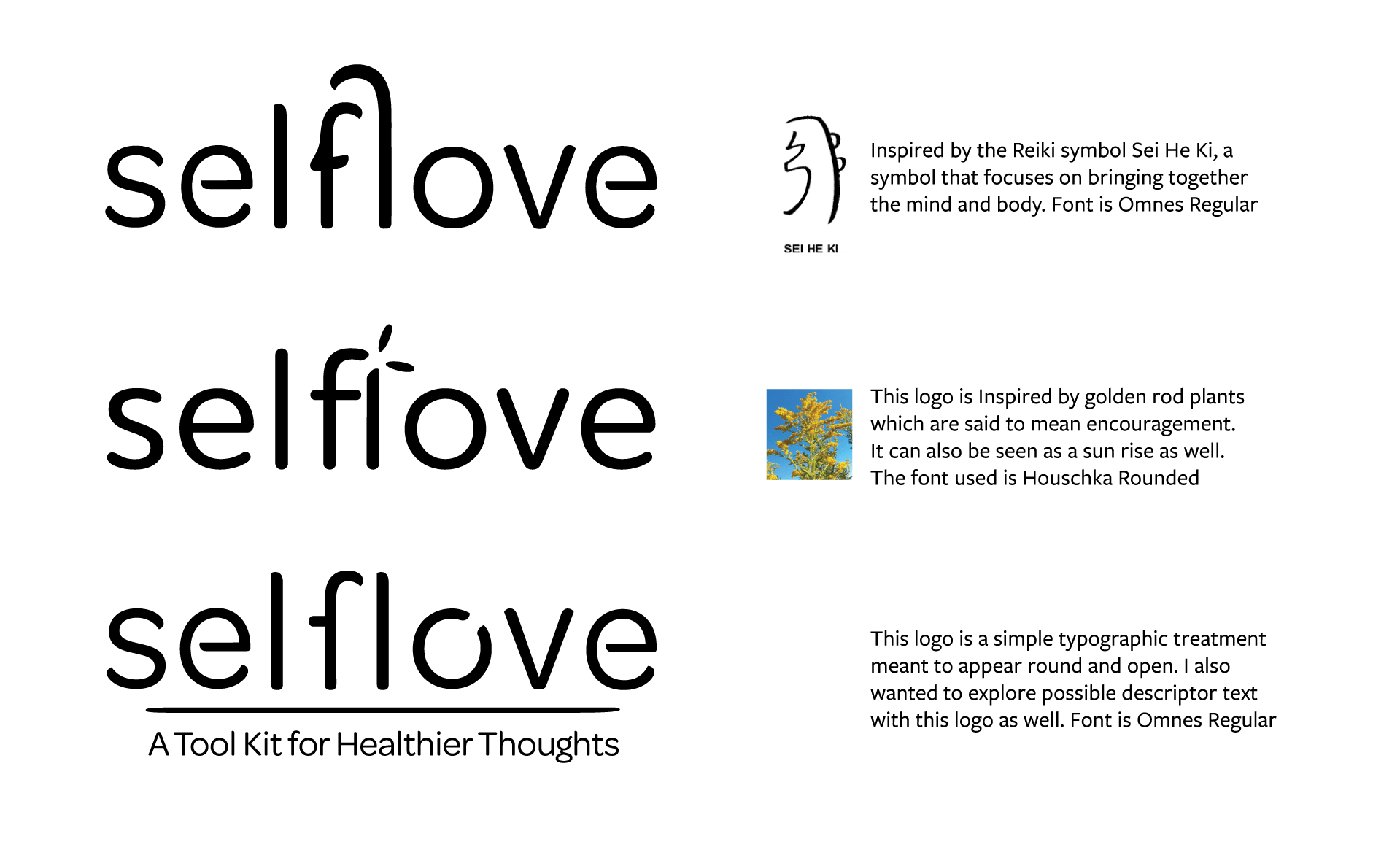Logo Creation, Brand Development
Selflove
Project Type
Overview
This speculative project was to create a tool kit to address a current issue. The concept of my tool kit was to provide a box with items that could promote healthier thinking habits that included a coloring book, writing tools, pocket journals, stress toys and an informational pamphlet. My goal was to develop a product to help with general symptoms of anxiety, depression or stress.
Logo Development
Initial logo exploration included researching plant and cultural symbolism, and natural forms. The typeface Omnes was used as a base for the final logo due to its round body and was customized so the f and l leaned toward each other signifying support, or an embrace and ribbons. The initial studies on Goldenrods inspired the color palette of a soft blue, gold and white.

Final Logo and Brand Colors
The final logo is a combination between the inspiration of the golden rod and Sei He Kei symbol. The l leaning over the f is inspired by the symbol and the shape of both the f and l is reminiscent of the shape of the golden rod standing in a field. The descriptor text was taken form the third logo concept. The modified font of the final logo is Omnes Regular.
The chosen brand colors were a light blue due to its calming effect, a gold color inspired by the golden rod reaching towards the sky and a neutral gray, to maintain a soft appearance.
Selflove Pamphlet
The Selflove pamphlet uses language that is meant to inform and support rather than accuse. The pamphlet addresses the gap of the kit in treating severe cases of mental health illnesses or mental health diagnoses by providing resources and information to inform the receiver of resources for these extreme symptoms.


Final Package
The final box mimics the packaging of a gift, another component determined with its original conceptualization. The primary receiver audience of the kit was determined to be young adults between 13 to 30 years of age, however this did not necessarily include the targeted buyers. The buyers of the kit are those concerned about someone they care about. A specific example is a grandfather buying a kit for his high school aged granddaughter after he notices a change in her behavior that includes symptoms of depression. It was also determined that replicating a gift could potentially assist in making the receiver feel just a little bit better.

